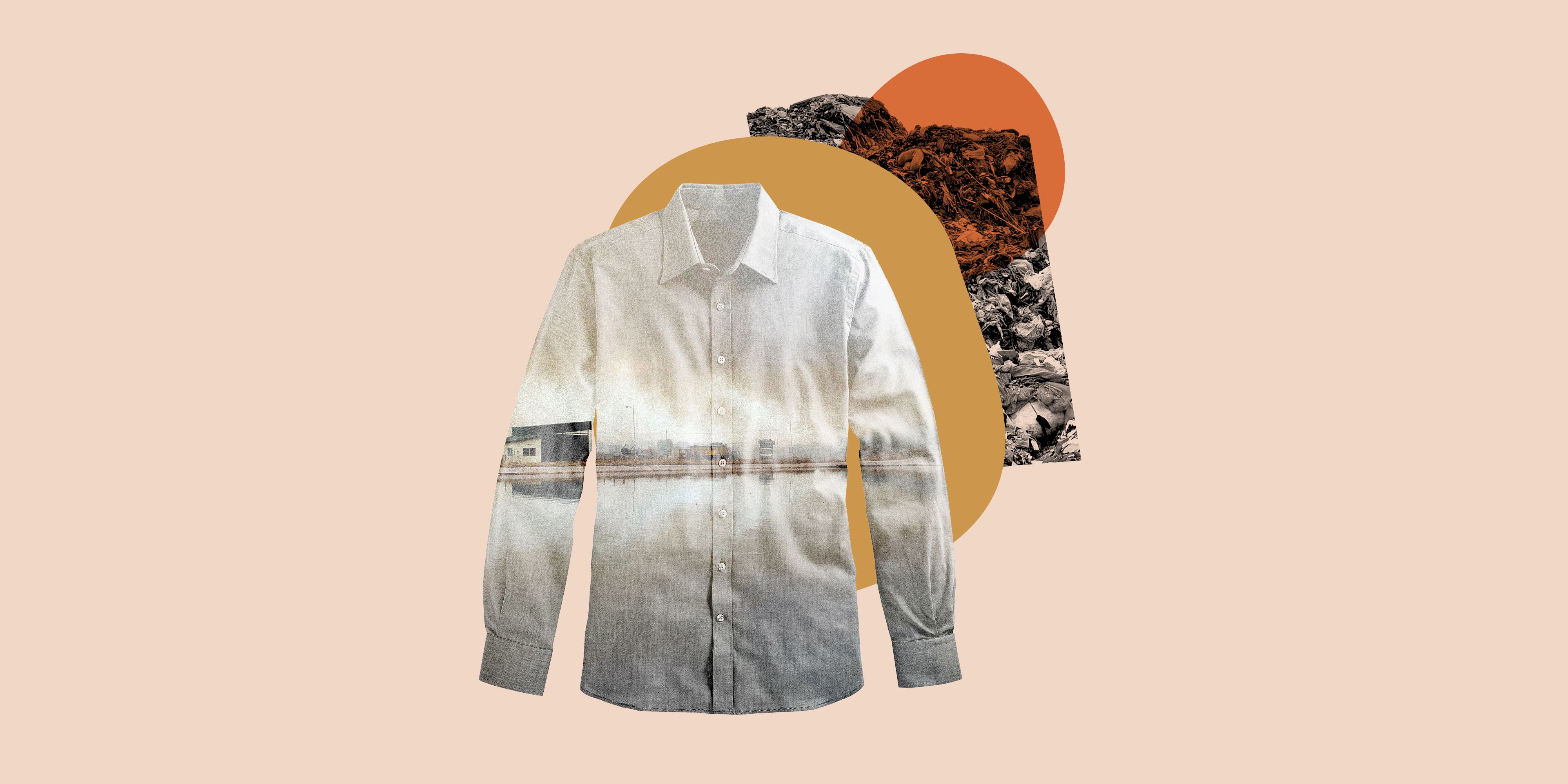Sustaining Local Cape Town Sustainable Fashion for a Greener Future
Wiki Article
Stay Ahead of the Curve by Exploring Innovative Style Fads
In a sector as vibrant as fashion, remaining in advance includes greater than just adhering to current trends-- it requires an expedition of advancement. Smart textiles, for circumstances, are transforming garments right into useful masterpieces, while 3D printing is changing design procedures with its personalized, waste-reducing capacities. As sustainability becomes a keystone, technologies like environment-friendly materials and round style methods are reshaping environmental duty - Cape Town Sustainable Fashion. In addition, the convergence of modern technology and style declares a brand-new period of consumer involvement. Just how, then, can these emerging fads redefine the future of fashion, and what effects do they hold for brand names looking for to prosper in this developing landscape?
Welcoming Smart Textiles
In the last few years, the fashion industry has actually seen a transformative change with the integration of smart textiles, a sophisticated advancement that mixes technology with fabric. This advancement represents not just a blend of looks and performance however additionally a considerable jump in the direction of sustainability and customization in style. Smart fabrics, likewise referred to as e-textiles, embed sophisticated electronics such as sensors and conductive strings within the fabric, allowing garments to engage with the setting or the wearer.These fabrics are made to monitor physical criteria, such as heart price or body temperature, giving real-time wellness analytics. Beyond wellness applications, wise fabrics are additionally being used for adaptive clothing, which can change color or pattern in response to environmental stimulations, hence offering a vibrant style experience.
Moreover, the advancement of energy-harvesting fabrics that produce power from movement or sunshine is leading the way for self-sufficient wearable technology. This technology is attracting environmentally conscious customers and developers aiming to minimize the ecological impact of style. As study and advancement in this field development, smart textiles are anticipated to come to be progressively widespread, reshaping the landscape of contemporary style with their multifunctional abilities.
The Surge of 3D Printing
Transforming the production landscape, 3D printing has become a game-changer in the garment industry. This advanced technology has allowed developers to push the borders of imagination, producing detailed and tailored garments that were previously unimaginable. By leveraging electronic style and additive manufacturing, 3D printing helps with the creation of intricate geometries and patterns, permitting designers to trying out brand-new textures and frameworks.A notable advantage of 3D printing in fashion is its ability to produce on-demand, reducing waste and reducing inventory demands. This performance not just optimizes production procedures but additionally permits rapid prototyping, allowing developers to bring their visions to life in a shorter duration. Furthermore, 3D printing supports personalization somewhat unmatched by conventional techniques, supplying special layouts and tailored fits customized to specific consumer preferences.
The rise of 3D printing has likewise democratized fashion, making it easily accessible to emerging developers that can now fabricate top notch items without significant economic investment in typical manufacturing infrastructure. As modern technology remains to breakthrough, the fashion industry is poised to harness the complete potential of 3D printing, exploring brand-new products and strategies that will most certainly redefine how fashion is conceived and created.
Sustainable Fashion Innovations
As the garment industry faces journalism demand for ecological responsibility, sustainable fashion developments have actually emerged at the forefront of transformative you could look here change. The expanding awareness of ecological influence has fueled a shift in the direction of more eco-conscious practices and products. Brand names and developers are currently prioritizing sustainability, integrating methods that decrease waste and decrease carbon footprints.One considerable growth is the rise of round style, which stresses recycling and upcycling to expand the lifecycle of garments. This approach not only decreases waste however likewise encourages consumers to embrace a much more mindful technique to apparel consumption.
Another innovation exists in the adoption of ingenious dyeing techniques that utilize waterless directory processes or all-natural dyes, thereby decreasing the vast amounts of water and chemicals typically used in fabric dyeing. Furthermore, advancements in biotechnology have resulted in the production of lab-grown natural leather and textiles, using cruelty-free and eco pleasant alternatives to standard products. With these pioneering initiatives, the style market is making significant strides in the direction of an extra sustainable future.

Tech-Integrated Garments
Tech-integrated apparel stands for a cutting-edge combination of style and modern technology, reshaping just how individuals engage with their apparel. This innovative domain name is marked by the inclusion of wise textiles and embedded digital elements, boosting both performance and visual allure. From fitness trackers embedded in sports apparel to warmed coats controlled through smartphone apps, tech-integrated apparel supplies customers extraordinary comfort and flexibility.Introducing brands are driving this trend, concentrating on creating garments that reply to environmental stimuli or user commands. For example, some garments can transform shade or pattern in feedback to temperature shifts, while others include biometric sensing units to keep an eye on wellness metrics like heart rate or stress and anxiety degrees. The seamless assimilation of modern technology right into fabrics additionally expands to environmental sustainability, with initiatives to establish self-cleaning materials or garments that adapt to weather, thus decreasing the requirement for numerous layers.
Furthermore, moved here the development of wearable modern technology is not just limited to garments but prolongs to accessories like watches and glasses, further broadening the extent of tech-integrated fashion. As the sector remains to innovate, the potential for modification and personalization in clothing grows, providing customers unique, tech-enhanced fashion experiences that deal with their individual demands and preferences.
Future of Virtual Fashion
In the last few years, the future of virtual style has arised as a transformative force within the sector, leveraging advancements in digital technology to redefine how fashion is created, experienced, and consumed. By incorporating increased fact (AR), online truth (VR), and 3D style devices, developers can currently craft interactive and immersive experiences that go beyond typical fashion borders. Virtual style allows for the production of garments that exist exclusively in digital environments, providing countless opportunities for development without the restrictions of physical production.This electronic shift not only presents chances for innovative expression but additionally addresses sustainability concerns fundamental in standard fashion methods. Cape Town Sustainable Fashion. By removing the need for physical sources, virtual fashion minimizes waste and reduces carbon impacts. Furthermore, the increase of online fashion straightens with the boosting consumer demand for one-of-a-kind and personalized experiences, as digital garments can be customized and customized to specific preferences effortlessly

Verdict
The style sector's future lies in the combination of lasting techniques and innovative innovations. Online style is positioned to redefine consumer communications.In recent years, the style industry has actually witnessed a transformative shift with the integration of clever fabrics, a cutting-edge technology that mixes modern technology with textile.As the fashion market grapples with the pressing need for ecological duty, sustainable fashion advancements have emerged at the leading edge of transformative change.In current years, the future of digital style has arised as a transformative pressure within the market, leveraging developments in electronic technology to redefine just how fashion is developed, experienced, and eaten. The increase of digital style aligns with the boosting consumer demand for one-of-a-kind and personalized experiences, as online garments can be tailored and customized to individual preferences with ease.
The fashion market's future lies in the combination of lasting techniques and cutting-edge innovations.
Report this wiki page